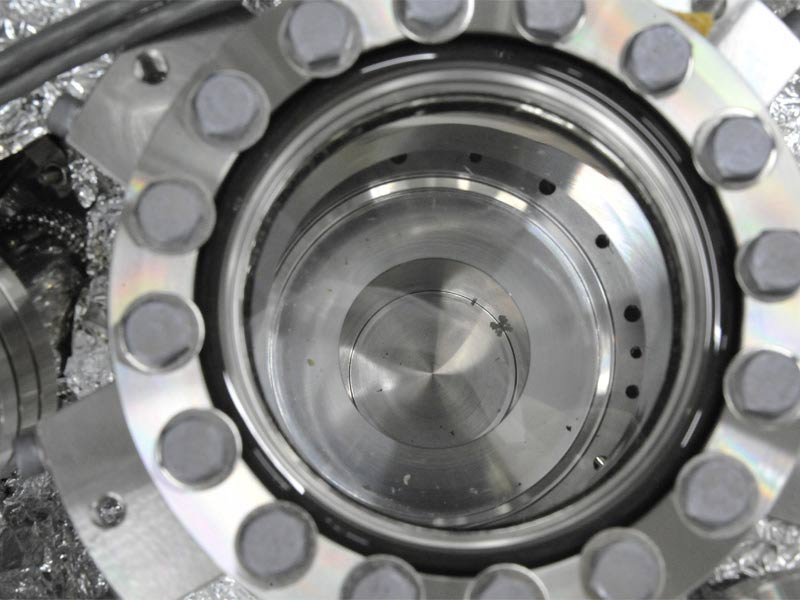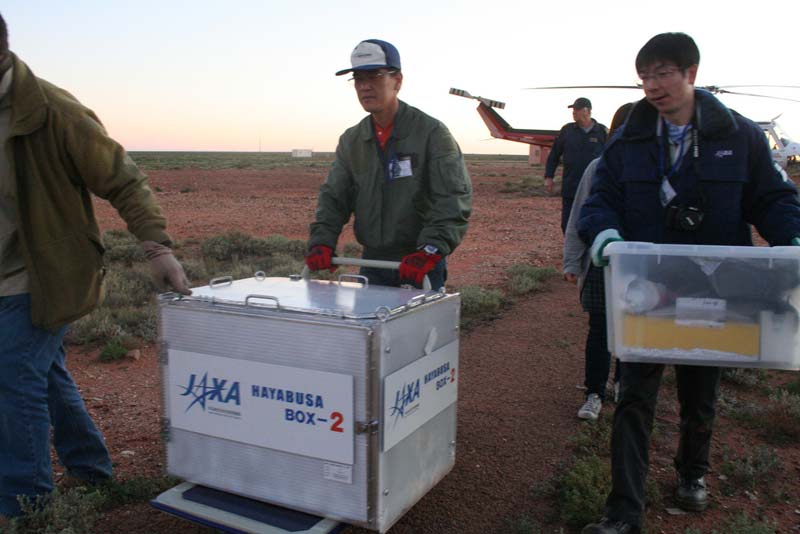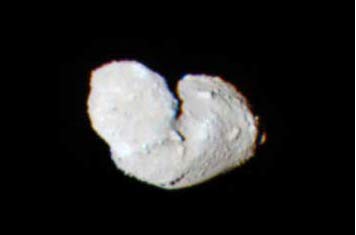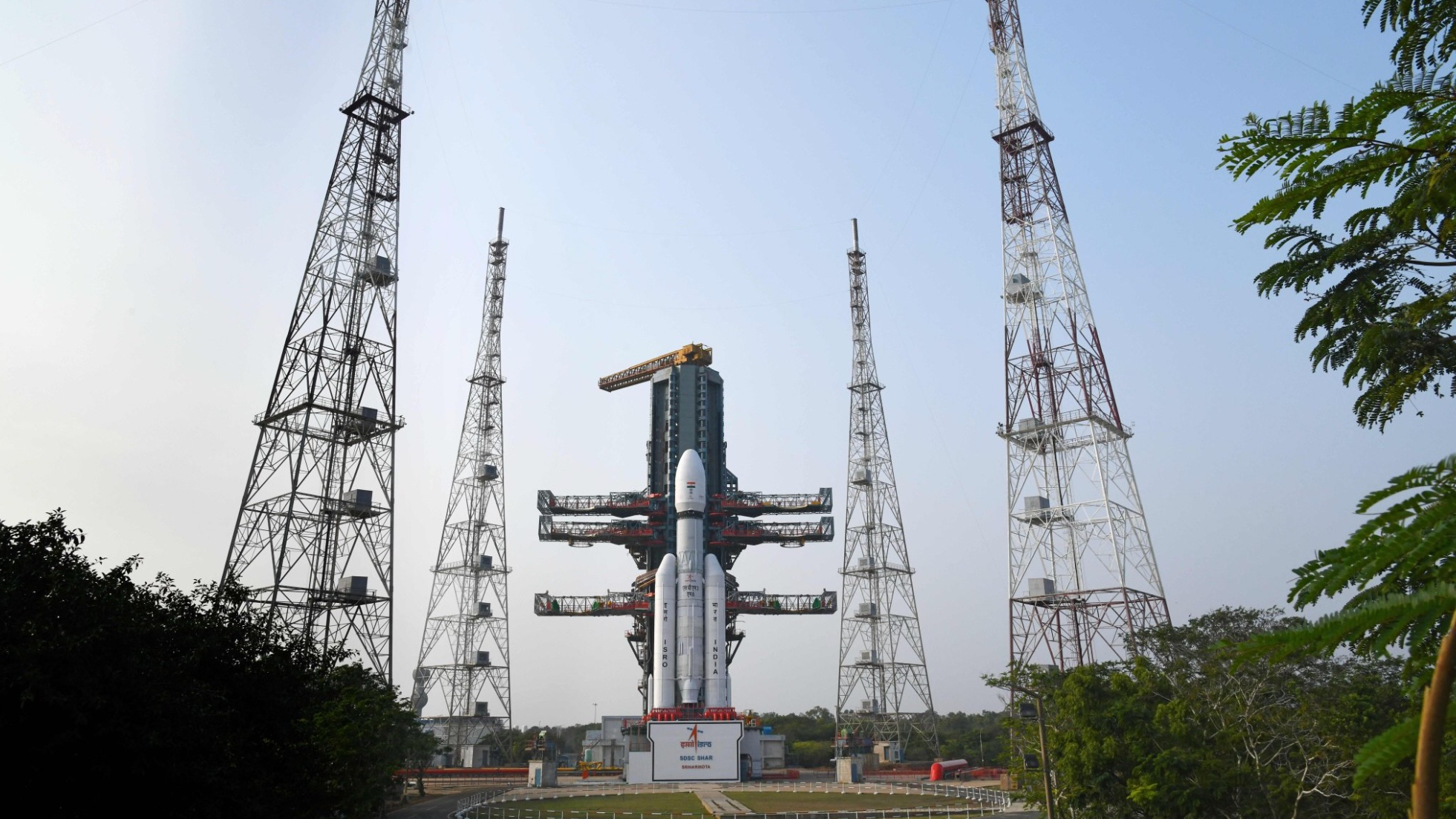Grains of Asteroid Dust Get a Good Going-Over in Japan

It came from outer space and returned ultra-small bits of asteroid 25143 Itokawa.
Last June, a capsule from the Japan Aerospace Exploration Agency’s Hayabusa spacecraft screamed back to Earth following a seven-year voyage, parachuting into Australian outback.
After recovery, that return capsule was transported to the Planetary Material Sample Curation Facility at the space agency's Sagamihara campus. Carefully opened, the sample container was found to contain a large number of minute particles.
Preliminary investigation of the capsule’s contents has found rocky particles, with most of them judged to be of extraterrestrial origin … and definitely from asteroid Itokawa. [Photos: Japan's Asteroid Mission Hayabusa]
Now, Japanese researchers have shared what they’ve learned from the asteroid particles collected during the successful Hayabusa sample-return mission.
The scientists discussed the results with 1,800 space scientists this month at the 42nd Lunar and Planetary Science Conference in The Woodlands, Texas. The meeting was organized by the Lunar and Planetary Institute and NASA’s Johnson Space Center.
Successful recovery of particles
Breaking space news, the latest updates on rocket launches, skywatching events and more!
The scientists from the Japan Aerospace Exploration Agency (JAXA) have been subjecting samples of asteroid Itokawa to an intensive set of tests since January, according to Akira Tsuchiyama of Osaka University's Department of Earth and Space Science, in Toyonaka. Those tests are aimed partly at identifying the origin of the asteroid and its evolution, as well as the role that space weathering has had on the celestial object.
While Hayabusa’s specimen-collecting hardware "didn't work as normal," ultra-tiny particles did find their way into the spacecraft's innards when the probe's sampling horn made contact with the asteroid, Tsuchiyama pointed out.
"More than 1,500 particles were successfully recovered … so we have to obtain as much information as possible from a small amount of sample," Tsuchiyama reported.
In painstaking fashion, a grain-by-grain analysis is under way, he added.
While several methods have been used to recover particles — a Teflon spatula and a special micro-manipulator system, for example — some fragments were far too petite to handle. Most are smaller than 100 microns.
At one point, according to one team member, the shaft of a screwdriver was used to beat on sample catcher hardware to free minuscule flecks of asteroid material. [Infographic: How Japan's Hayabusa Asteroid Mission Worked]
Study of the particles to date indicate that the surface of asteroid Itokowa has an abundance of olivine- rich minerals, potentially similar to materials known as LL5 or LL6 chondrites, reported Tomoki Nakamura of Tohoku University’s Department of Earth and Planetary Material Sciences.
"The mineral composition is exactly the same," Nakamura said.
This is a most important aspect of the Hayabusa mission, because it finally links chemical analyses of meteorites found on Earth to spectroscopic measurements of the asteroids.
Nakamura reported that investigations of the asteroid particles suggest Itokowa is a "broken piece" of a larger S-type object.
Get set for Hayabusa 2
Meanwhile, work is progressing on the sequel asteroid mission Hayabusa 2, said Hajime Yano of JAXA's Space Exploration Center. That plan now calls for launch in 2014 to a space rock known as asteroid 162173 1999 JU3.
"There were many lessons learned" from the first Hayabusa probe, Yano told SPACE.com, and there will be "lots of modifications" to Hayabusa 2. He emphasized that for those who think Hayabusa 2 will be just a copy of JAXA’s first asteroid probe, "That’s not correct."
"I think they are set. … They'll get their budget" for Hayabusa 2, said Paul Abell, lead scientist for planetary small bodies within the Astromaterials Research and Exploration Science Directorate at NASA's Johnson Space Center. Abell worked with JAXA on the Hayabusa 1 mission as a joint science team member.
Hayabusa 2 will be taking along an impactor – one that detonates an explosive, Abell said.
"They are going to try and take surface samples before and after the impact event. Right now, the nominal idea for the mission duration at the asteroid is about a year, whereas Hayabusa 1 at Itokowa was about three months," Abell explained. "It’s a scientifically aggressive mission."
Leonard David has been reporting on the space industry for more than five decades. He is past editor-in-chief of the National Space Society's Ad Astra and Space World magazines and has written for SPACE.com since 1999.

Leonard David is an award-winning space journalist who has been reporting on space activities for more than 50 years. Currently writing as Space.com's Space Insider Columnist among his other projects, Leonard has authored numerous books on space exploration, Mars missions and more, with his latest being "Moon Rush: The New Space Race" published in 2019 by National Geographic. He also wrote "Mars: Our Future on the Red Planet" released in 2016 by National Geographic. Leonard has served as a correspondent for SpaceNews, Scientific American and Aerospace America for the AIAA. He has received many awards, including the first Ordway Award for Sustained Excellence in Spaceflight History in 2015 at the AAS Wernher von Braun Memorial Symposium. You can find out Leonard's latest project at his website and on Twitter.


